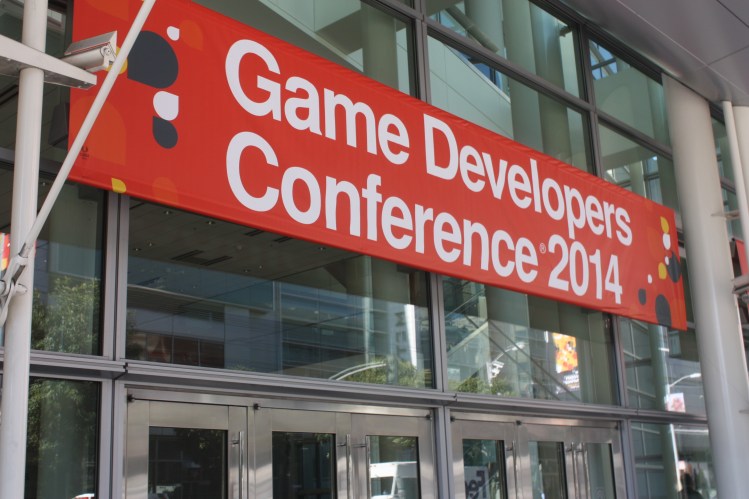This is an edited version of a speech I gave at the Digital River Monetization Summit at the Game Developers Conference last week. A lot has changed in gaming in the last week, and I’ve added a few remarks to reflect that. I hope you enjoy it.
I hope you are aware of the term opportunity cost. I am grateful that you are here and not somewhere else. You came here to listen to a talk on games from someone who has never made a game in his life. That also means I have never monetized a game in my life, except by writing game reviews or game news.
You are missing out on something by being here. The best thing you could do right now is leave here, go straight the Changyou booth, and get a check from them. The Chinese online game company announced it would invest $600 million in mobile game developers. So leave early, and save me a spot in line. For the rest of you, I’d like to show you how I try to connect the dots for readers. We do that on our web sites, GamesBeat and VentureBeat, and at our own game conference, GamesBeat 2014, which will be held Sept. 15-16 this year in San Francisco.
After all this time covering games, I figured it was time to give my own talk, even if it is filled with the thinking of a lot of smart people and not so much my own original ideas. What I would like to do is toss out some facts in this talk, connect the dots, and answer some questions about the state of the industry.
My first statement is that numbers can tell you something.
That $600 million figure from Changyou is telling. Changyou’s value in the market is $1.5 billion. If you want to buy it, you have to pay that amount. Changyou is risking about 35 percent of its value on mobile gaming. Now that takes guts. The former CEO of HP got fired because he risked 20 percent of the company’s value on an acquisition that brought in 1 percent of revenue.
Before we move into the questions, let’s take a look at the stock prices (as of March 14) for a bunch of companies in the game space, including both the owners of game platforms and the game publishers. One way to look at it is this: If Apple is worth $468 billion, then surely Supercell must be worth $3 billion? If that thinking sounds a little flawed, don’t be surprised. These are investors who come up with these numbers, and they don’t always pay attention to relative valuations. If you’re at the top of this chart, you’re royalty. If you’re at the bottom, you’re a slave.
Now here’s a trivia question. Which one of the companies here is the largest game company in the world, based on game revenues? If you answered China’s Tencent, you are right. Newzoo announced that Tencent’s annual game revenue in 2013 was about $5.3 billion, or 8 percent of the whole $70.4 billion global gaming market. Tencent’s top game is CrossFire, a five-year-old free-to-play shooter developed by South Korea’s SmileGate. It made $957 million in revenue last year, according to SuperData Research. I think it is why Call of Duty isn’t really going anywhere in China.
Are we in a golden age?
I think the answer to that is an unequivocal yes.
Smartphones and tablet games are growing like crazy, with revenues hitting $12 billion last year. And the consoles are coming back strong too. Michael Pachter, who is always right, predicts that growth will come back for consoles and handhelds.
Console and handheld software grew 75 percent from 2005 to 2008, then declined 45 percent from 2008 to 2013. Pachter predicts 9 percent compound annual growth for consoles and handhelds through 2016. Meanwhile he predicts PC free-to-play games will grow 20 percent to 25 percent in the next few years.
All parts of the game business are growing, and the number of viable platforms is multiplying. Tim Merel of Digi-Capital predicts global gaming will grow from $70 billion to $100 billion by 2017. At that point, he predicts mobile and online will be 60 percent of the total.
According to Merel, the average investment for a game startup in 2013 was $6 million, up 14 percent from 2012. The total amount invested in 2013 returned to the 2010 level of $1 billion, after a dip in 2012.
The average M&A deal was $64 million in 2013, up 23 percent from a year ago. The total value of M&A deals was $5.3 billion, up 29 percent from a year earlier.
Newzoo estimates that there are now 1.23 billion gamers on the planet. Flurry says 525 million are actively playing games on a monthly basis. That is pretty golden.
Are we in a bubble?
Uh, that’s probably a yes too. But it’s only a bubble if the industry is going to pop. Right now, there is no sign that this is going to happen in 2014. Of course, all bets are off if the world economy takes a bad turn. But look at the valuations of those companies on our list. They can still afford to buy a lot more companies.
Nine of 10 of the biggest game company buyers in 2013 were Asian. And 30 companies in Asia have $1 billion in cash or more, and all of those have done game acquisitions in the past, according to the Corum Group. They can still pump a lot of air into this bubble.





